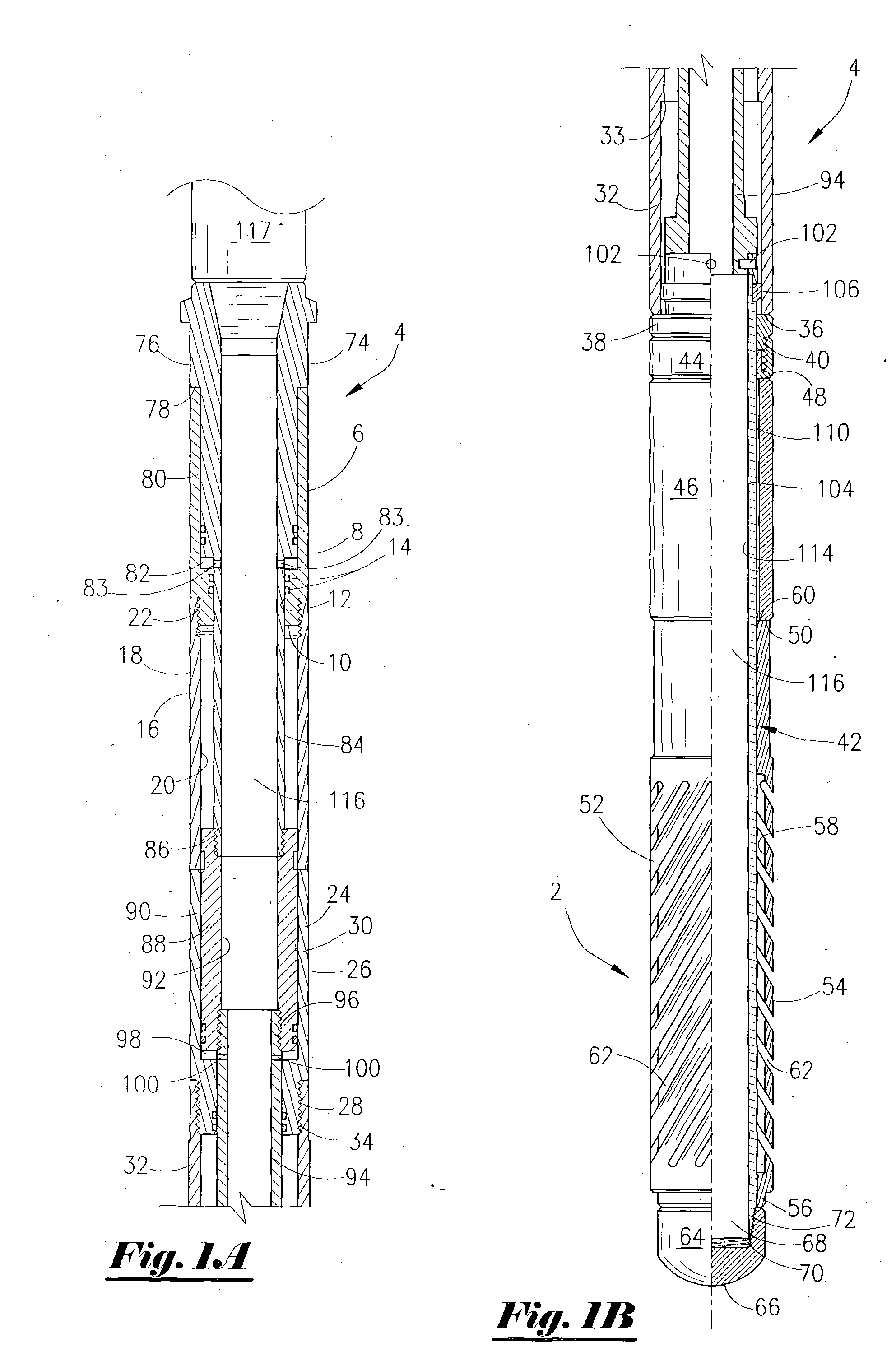Spiral tubular tool and method
a tubular tool and spiral tube technology, applied in the direction of insulation, borehole/well accessories, construction, etc., can solve the problems of restricted expansion ability of the tube tube packer, and achieve the effect of enhancing the anchoring
- Summary
- Abstract
- Description
- Claims
- Application Information
AI Technical Summary
Benefits of technology
Problems solved by technology
Method used
Image
Examples
first embodiment
[0093] Referring now to FIG. 13, a side view of the slot pattern of the present invention will now be described. This embodiment shows the slot pattern as being slanted at a constant angle of inclination for all slots, with the cuts of the individual slots running generally parrallel to each other in a same direction. The slot pattern in FIG. 13 is referred to as a spiral pattern and is denoted by the numeral 160. In one of the preferred embodiments, the angle of inclination of the slots shown in FIG. 13 is approximately 37 degrees, which is shown by the numeral 161. It is to be understood that the angles can vary from 20 degrees to 50 degrees, with a preferred range from 25 degrees to 45 degrees. The angle is offset from the longitudinal center of axis of the outer tubular member.
second embodiment
[0094] In FIG. 14, a side view of the slot pattern of the present invention is illustrated. This embodiment depicts a first spiral pattern running in a first direction (denoted by the numeral 162), which in turn extends to a cut parallel to the longitudinal axis of the device 2 (denoted by the numeral 164) which in turn extends to the second spiral pattern which is essentially the opposite direction of the first slot pattern 162. This second spiral pattern is denoted by the numeral 166. In one preferred embodiment, the angle of the first spiral pattern 162 is approximately 37 degrees, even though the angles can vary from 20 degrees to 50 degrees, with the preferred range from 25 degrees to 45 degrees, and the angle of the second spiral pattern 166 is 37 degrees, even though the angles can vary from 20 degrees to 50 degrees, with the preferred range from 25 degrees to 45 degrees.
third embodiment
[0095] Referring to FIG. 15, a side view of the slot pattern of the present invention will now be described. In this embodiment, the slot pattern has a first spiral pattern running in a first direction (denoted by the numeral 168), which in turn extends to a slot parallel to the longitudinal axis of device 2 (denoted by the numeral 170) which in turn extends to the second spiral pattern which is essentially the same direction of the first spiral pattern 168. This second spiral pattern is denoted by the numeral 172. As in the embodiment of FIG. 13 and FIG. 14, the angle of the first spiral pattern 168 and second spiral pattern 172 is approximately 37 degrees, even though the angles can vary from 20 degrees to 50 degrees, with the preferred range being 25 to 45 degrees. It is to be understood that the slot patterns may be changed depending on the specific circumstances of the well, the restrictions, the down hole conditions, the objective of the operation, etc. Thus, while three slot ...
PUM
 Login to View More
Login to View More Abstract
Description
Claims
Application Information
 Login to View More
Login to View More - R&D
- Intellectual Property
- Life Sciences
- Materials
- Tech Scout
- Unparalleled Data Quality
- Higher Quality Content
- 60% Fewer Hallucinations
Browse by: Latest US Patents, China's latest patents, Technical Efficacy Thesaurus, Application Domain, Technology Topic, Popular Technical Reports.
© 2025 PatSnap. All rights reserved.Legal|Privacy policy|Modern Slavery Act Transparency Statement|Sitemap|About US| Contact US: help@patsnap.com



